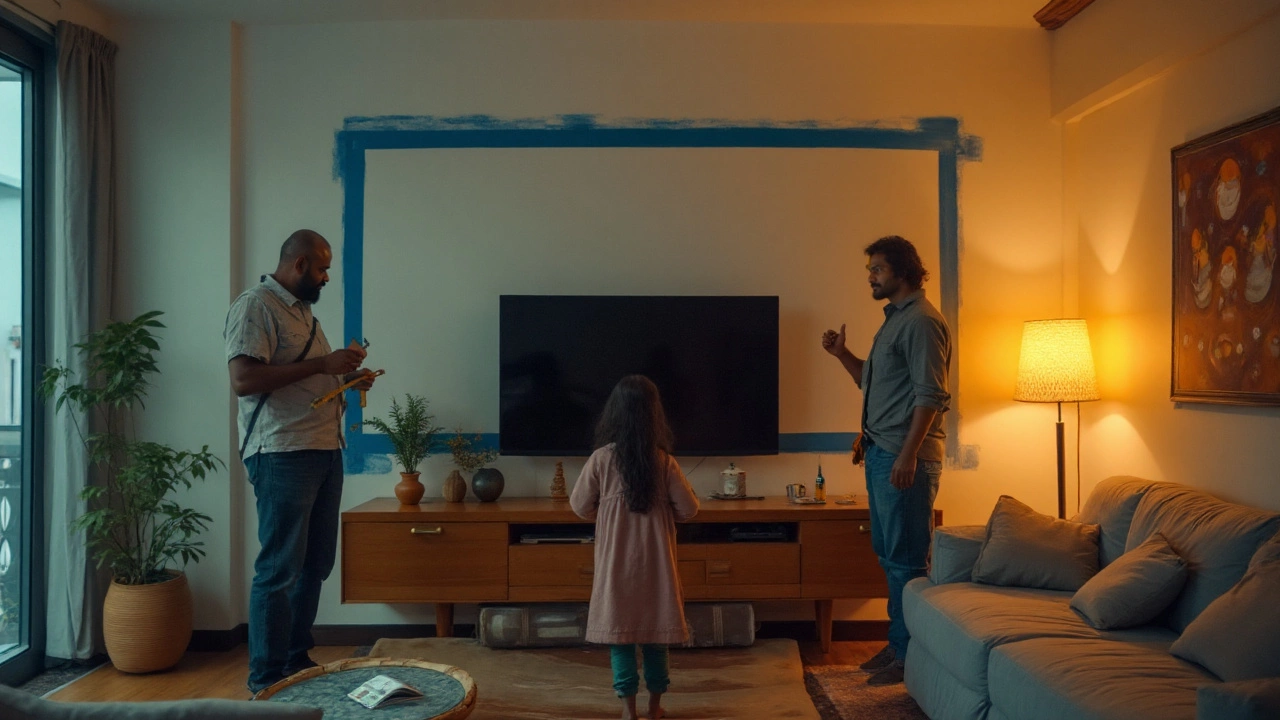65 vs 55 TV Width: Choosing the Right Size for Your Home
Staring at a blank wall and wondering if you should go big with a 65‑inch screen or stick to a 55‑inch model? You’re not alone. The right TV size depends on how far you sit, how much wall you have, and a few practical details like price and sound. Below we break down the key factors so you can pick the size that feels right in your living room.
How far should you sit?
Most experts say the ideal viewing distance is 1.5 to 2.5 times the diagonal screen size. For a 55‑inch TV that works out to 6.9‑9.2 feet. For a 65‑inch TV, aim for 8.1‑10.4 feet. If you usually sit around an 8‑foot couch, a 65‑inch gives a more immersive feel without straining your eyes. If your sofa is closer to 6‑7 feet, the 55‑inch model will look sharp and comfortable.
Wall space and room layout
Measure the width of the wall where you plan to mount the TV. A 55‑inch TV is roughly 48 inches wide, while a 65‑inch TV measures about 57 inches. Leave at least a few inches of breathing room on each side so the TV doesn’t look cramped. Also consider any surrounding décor—bookshelves, art, or windows. A larger screen can dominate a small room, making it feel crowded, whereas a smaller screen can get lost in a big open space.
Don’t forget height. The center of the screen should sit at eye level when you’re seated. If you mount a 65‑inch TV higher to fit a tall wall, you might end up looking up, which can cause neck strain. Use an adjustable wall mount or a TV stand to fine‑tune the height.
Price is a big factor, too. A 55‑inch 4K TV often starts around $400‑$500, while a 65‑inch model can be $700‑$1,200 depending on brand and features. If you’re on a budget, the 55‑inch gives solid picture quality without the premium price tag.
Sound matters as well. Larger TVs sometimes come with better built‑in speakers because there’s more space for drivers. However, most modern sets need a soundbar or a small home theater system for a real cinema experience. If you plan to add external speakers anyway, the size difference in audio performance becomes less critical.
Think about future upgrades. If you might add a gaming console or stream 4K HDR content soon, a larger screen can showcase the extra detail better. But if you mainly watch news or sitcoms, the 55‑inch is more than enough.
Finally, check the room’s lighting. Bigger screens can reflect more light, which might be a problem in a bright living room. Using curtains or anti‑glare screens can help, but it’s an extra step you may not need with a smaller TV.
Bottom line: Match the TV size to your sitting distance, wall width, budget, and usage habits. If your couch is far enough away and you have the wall space, a 65‑inch TV offers a more immersive feel. If your room is tighter, your budget is tighter, or you sit closer, the 55‑inch model delivers crisp picture without overwhelming the space.
Take a tape measure, jot down your viewing distance, and compare the dimensions. The right size will feel natural, not forced, and you’ll enjoy movies, games, and shows without adjusting the seat.
How Much Wider Is a 65-Inch TV Than a 55-Inch? Exact Dimensions, Stand Fit, and Viewing Distance
Quick answer: a 65-inch TV is about 8.7 inches (22 cm) wider than a 55-inch. See exact dimensions, stand fit, viewing distance, and room setup tips in simple terms.





